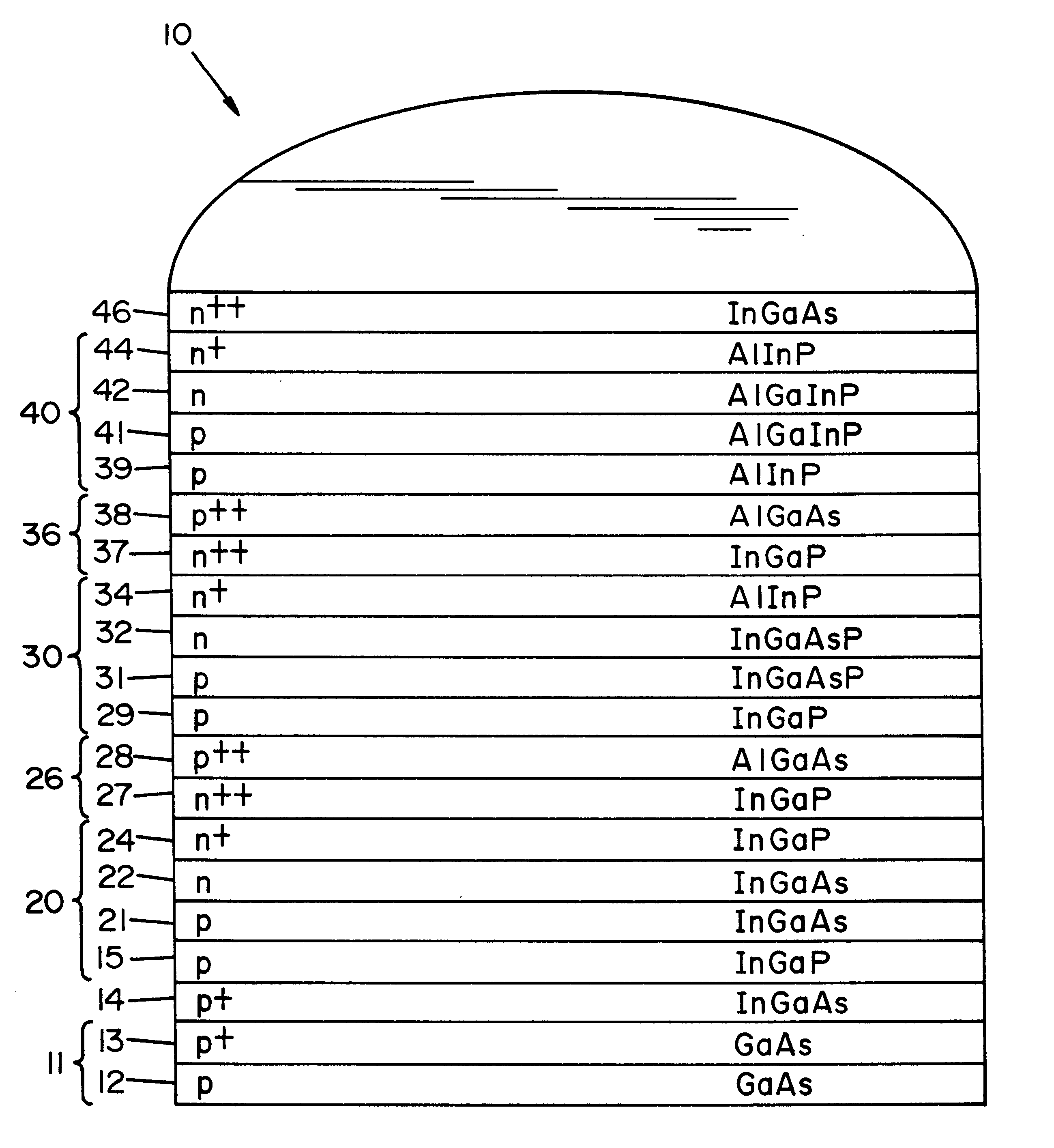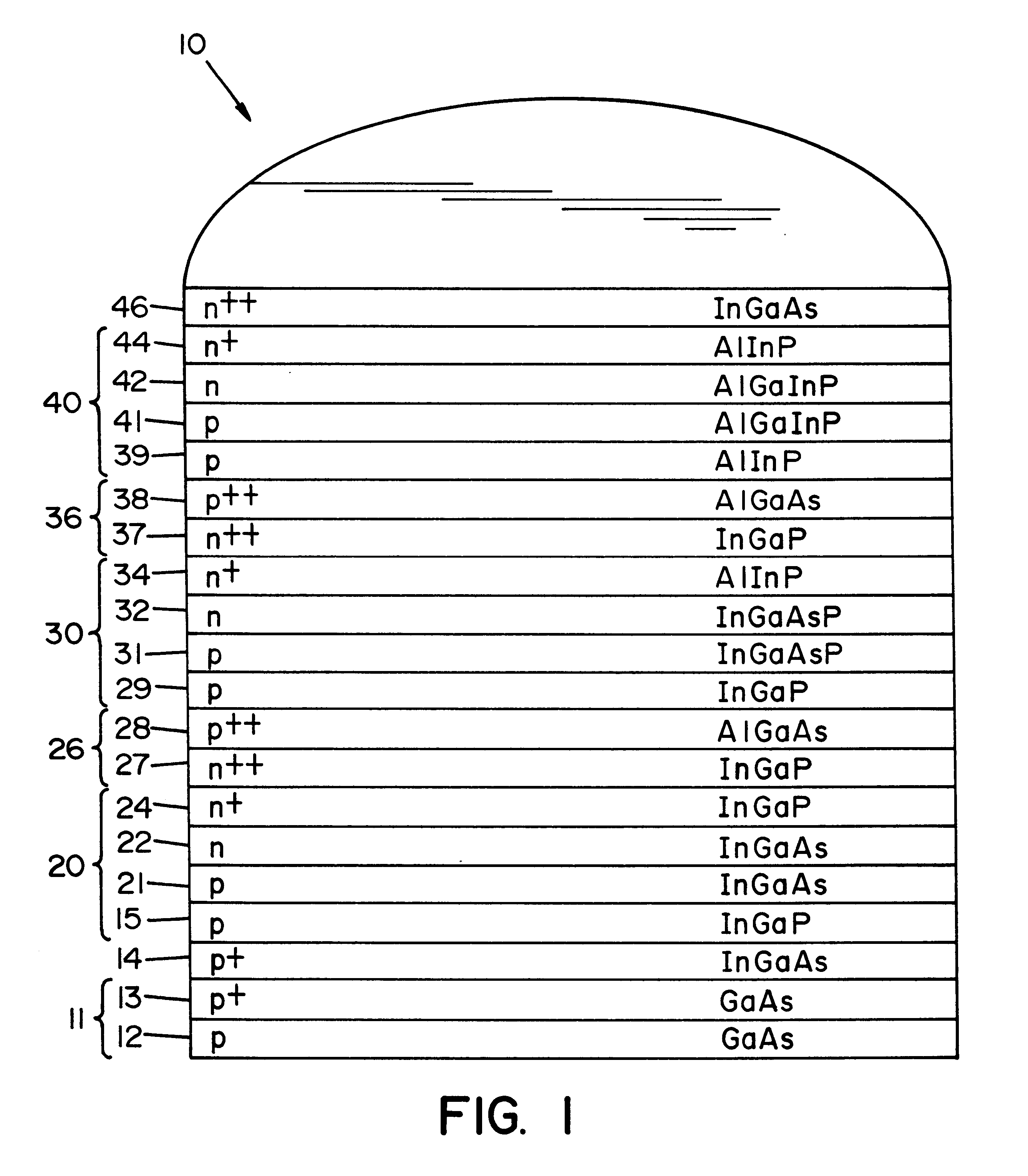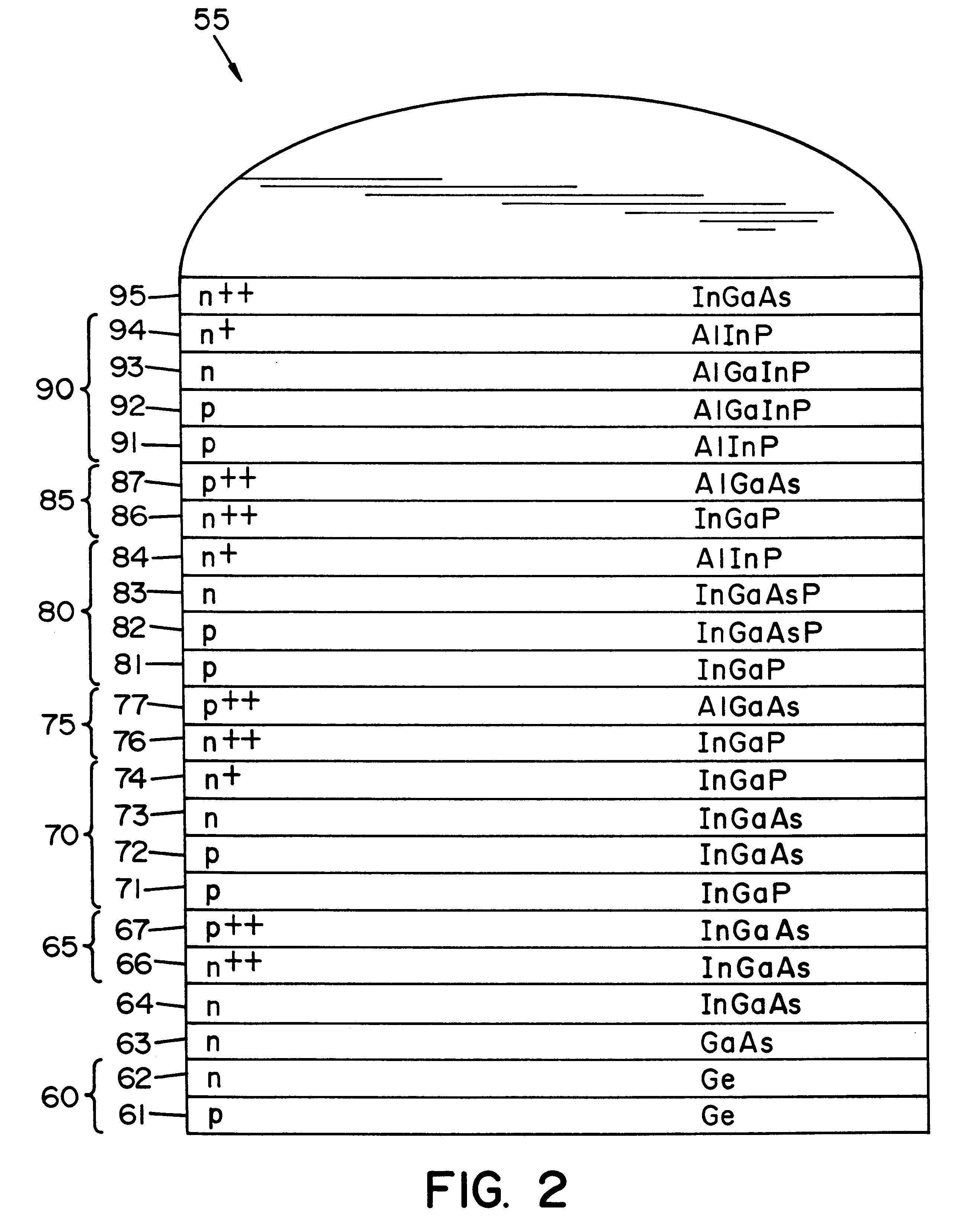Multi-junction photovoltaic cell
a photovoltaic cell and junction technology, applied in the field of triple junction photovoltaic devices, can solve the problems of cell directly affecting cell efficiency, loss of useful minority carriers, and many challenges in the construction of multi-junction cells, and achieve the effects of providing overall efficiency, and reducing the number of defects
- Summary
- Abstract
- Description
- Claims
- Application Information
AI Technical Summary
Benefits of technology
Problems solved by technology
Method used
Image
Examples
second embodiment
The photovoltaic cells of this invention are multi-junction cells that include at least three subcells that are lattice matched at 5.65 .ANG. to 5.75 .ANG.. The term lattice matched refers to the fact that each subcell is constructed to have the same lattice constant within about 5%, i.e., 0.050 .ANG.. In one embodiment, the photovoltaic cell includes three subcells, i.e., a triple-junction cell, and in a second embodiment, the cell includes four subcells, i.e., a quad-junction cell.
The triple-junction photovoltaic cell includes three subcells that are lattice matched at a lattice constant of 5.65 .ANG. to 5.75 .ANG., preferably 5.67 .ANG. to 5.73 .ANG., and more preferably 5.70 .ANG.. The cell is preferably constructed on a substrate that is characterized by being hard or robust. The substrate, however, need not be lattice matched to the subcells because a buffer layer is provided between the substrate and the first subcell. Between each subcell is a tunnel junction. The tunnel jun...
first embodiment
The first subcell, which in this first embodiment may be referred to as the bottom cell, is engineered to have an energy gap of about 1.1 to about 1.4 eV. Preferably, the first subcell is engineered to have a an energy gap of 1.2 to about 1.3 eV, and more preferably an energy gap of 1.2 eV. The preferred material for constructing this subcell is indium gallium arsenide, e.g., In.sub.0.13 Ga.sub.0.87 As.
The second subcell, which in this first embodiment may be referred to as the middle cell, is engineered to have an energy gap of 1.4 to 1.8 eV. Preferably, the second subcell is engineered to have an energy gap of 1.5 to about 1.7 eV, and more preferably an energy gap of 1.6 eV. The preferred material for constructing this subcell is indium gallium arsenide phosphide, e.g., In.sub.0.49 Ga.sub.0.51 As.sub.0.23 P.sub.0.77.
The third subcell, which in this first embodiment may be referred to as the top cell, is engineered to have an energy gap of 1.9 to about 2.3 eV. Preferably, the third...
PUM
 Login to View More
Login to View More Abstract
Description
Claims
Application Information
 Login to View More
Login to View More - R&D
- Intellectual Property
- Life Sciences
- Materials
- Tech Scout
- Unparalleled Data Quality
- Higher Quality Content
- 60% Fewer Hallucinations
Browse by: Latest US Patents, China's latest patents, Technical Efficacy Thesaurus, Application Domain, Technology Topic, Popular Technical Reports.
© 2025 PatSnap. All rights reserved.Legal|Privacy policy|Modern Slavery Act Transparency Statement|Sitemap|About US| Contact US: help@patsnap.com



